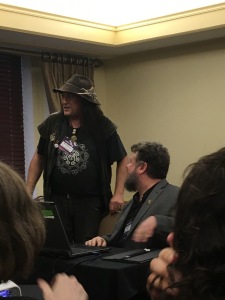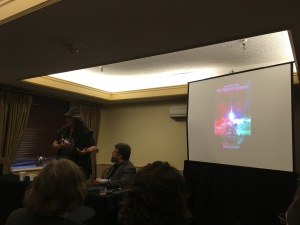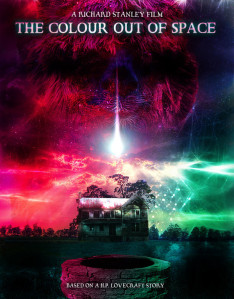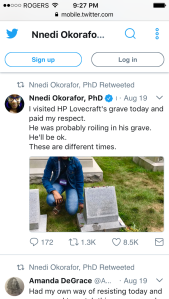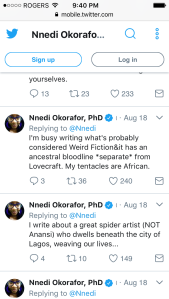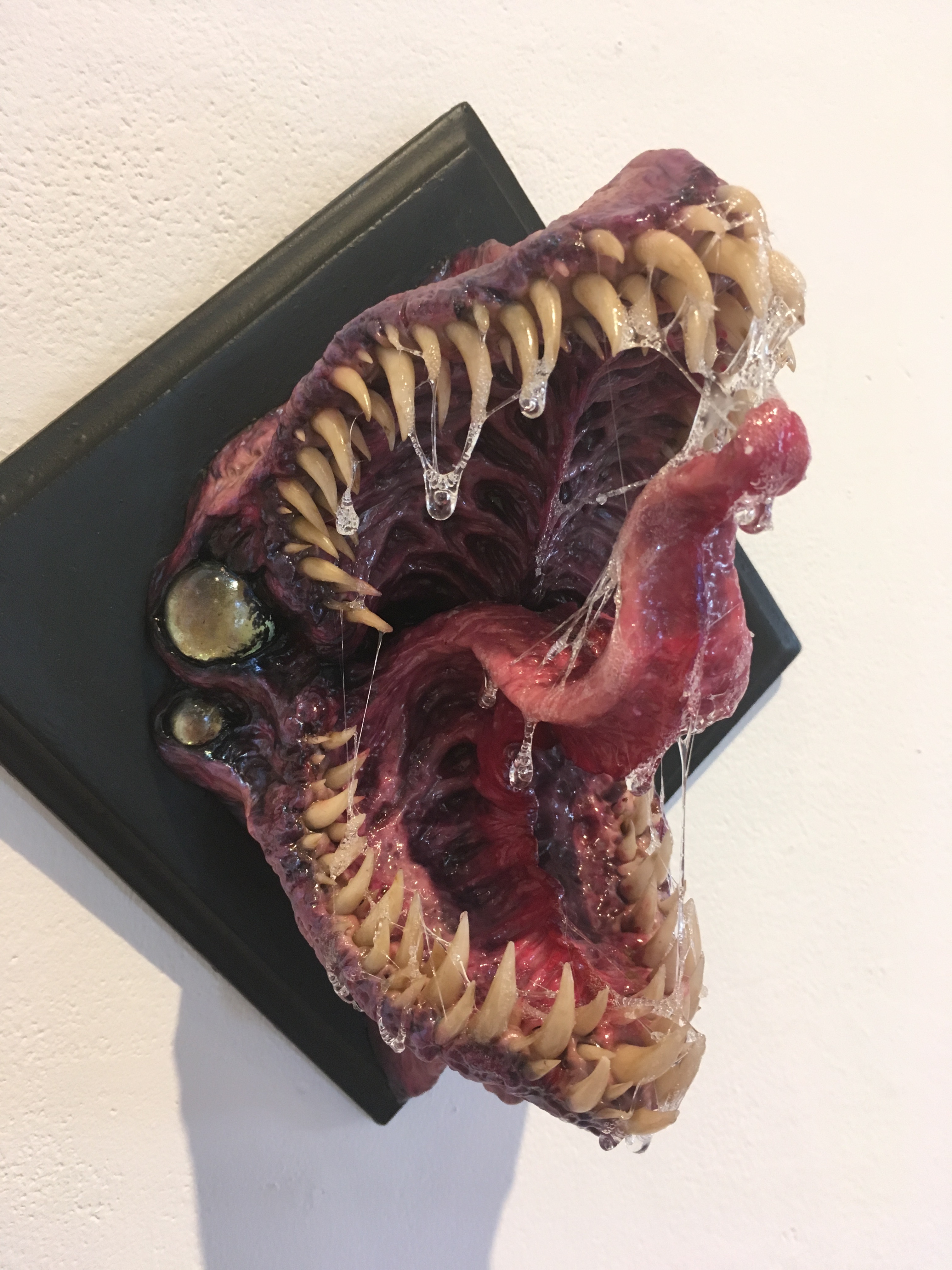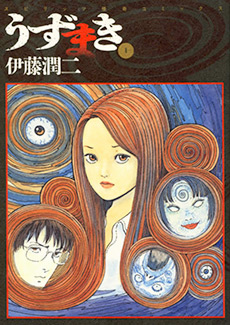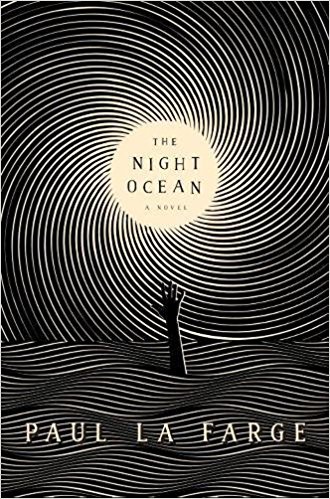
Read the reprint of Mike Allen’s story, “Tardigrade,” and poem “Dearly Beloved”, accompanying this interview.
Hello Mike, and thanks for agreeing to answer a few questions as part of our PstD author feature. To start off, can you tell our readers a little about who you are, what you do, what you’ve written, what you’re writing, what you’ve edited, what you’re editing?
What counts as a little? I can try for a little of each.
Let’s see. By day I work as a newspaper reporter. (Yes, newspapers still exist! And do excellent, necessary work.) In my spare time I write, edit and publish science fiction, fantasy and horror. I’m almost 50 years old. I grew up in a couple of out of the way places and still live in a (slightly larger) out of the way place, nestled in the Blue Ridge Mountains of southwest Virginia. I married my best friend, Anita, a little over 26 years ago.
I had interests in many different kinds of art as a kid — drawing, music, poetry, fiction, acting — and not much else, which put me at odds at times with my farmhand-turned-college professor-turned-computer programmer father as I got older, right up until I landed the newspaper job.
But since I was small, my greatest aesthetic interest has been the literature of the fantastic: reading it, writing it and eventually even publishing it. Like everyone else in the biz, I’m always grabbing at the next highest rung on the ladder, but I feel incredibly lucky to have pulled off the stunts I’ve managed so far.
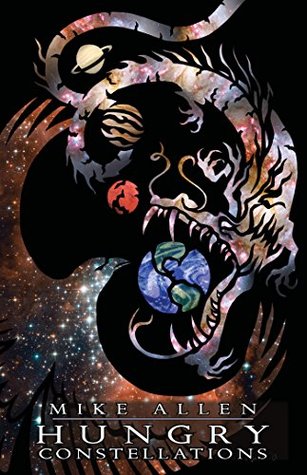
I sold my first story in 1992 to a long-forgotten pay-in-copy zine. In the first two decades of my sci-fi career, I plunged really deep into speculative poetry. There are three big fat (for collections of poetry) books that hold the bulk of those adventures (though not all of them!), containing about 60 poems each: Strange Wisdoms of the Dead (2006), The Journey to Kailash (2008) and Hungry Constellations (2014). Hungry Constellations deserves a little extra explanation: Dominik Parisien edited that one, selecting what he thought were the strongest pieces from Strange Wisdoms and Journey to Kailash, then adding a section of new stuff.
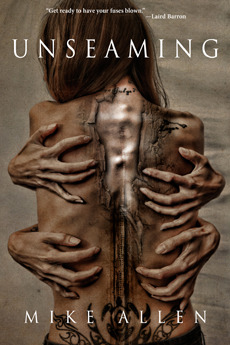
All along, I wrote more short stories, but I produced them less frequently than the poems and sold them even less frequently, so it took a while for them to build into a body of work. I had my first breakthrough of a sort in 2005, when a wacky novelette I co-wrote with Ian Watson, “Dee-Dee and the Dumpy Dancers,” appeared in Interzone, and a bigger one three years later when my horror story “The Button Bin” became a Nebula finalist. Still, when my stories appeared they never tended to attract much attention, so when my debut collection, Unseaming, came out, and it ended up being a Shirley Jackson Award finalist and selling several thousand copies, no one was more surprised than me! My followup collection, The Spider Tapestries: Seven Strange Stories (weird sci-fi and fantasy rather than horror) didn’t make as much noise.
I’ve had one novel published, The Black Fire Concerto (Haunted Stars, 2013). It’s a post-apocalyptic dark fantasy with music, magic, flying horses made of wood and hordes of ravenous undead, and I’m personally quite proud of it, but few people know it exists. I have another dark fantasy novel that’s currently seeking a home, cross fingers. A completed first draft of a sequel to Black Fire Concerto rests on a back burner. I’m in the foothills of another novel set in the present day that I think of as Lovecraftian noir. I’m also assembling a horror story collection that’s a follow-up to Unseaming, working title Aftermath of an Industrial Accident.
Though I’ve made inroads as a fiction writer, I think more people still know me as a poet or as an editor. (A fact that can make me gnash my teeth sometimes, heh.) I never dreamed, as a kid, of being an editor, how that came about would double the length of this already long answer.
My editing career has three major threads. There’s the anthologies, the highest profile of which is the Clockwork Phoenix series, intended as a home for difficult to classify stories with sci-fi, fantasy and/or horror elements. The first three volumes were originally published by Norilana Books, but I have all the rights to those now, and I edited and published the fourth and fifth volumes myself. Several stories from those books have been Nebula, Shirley Jackson and WSFA Small Press Award finalists and the most recent volume, Clockwork Phoenix 5, was a World Fantasy Award finalist last year.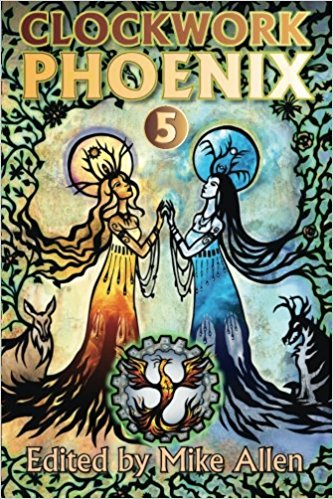
Then there’s the magazines. The obvious one to mention here is Mythic Delirium, which I started in 1998 as a biannual all-poetry journal. Eventually I switched from print-only to digital-only and started including short stories. This year, we published the 50th issue of Mythic Delirium, which also happened to be the 20th anniversary issue, and with that I put the zine on hiatus.
The third thread is books. I’ve dabbled in editing and publishing books by other authors for years — the first one was The Lexicographer’s Love Song, a poetry collection by Ian Watson, put out by DNA Publications in 2001. Things got a bit more serious when Anita and I decided to release Bone Swans, a collection of five novellas from C. S. E. Cooney, through our Mythic Delirium Books imprint, and even more serious when Bone Swans won the World Fantasy Award in 2016. (We were there at the ceremony, and so was Claire Cooney, the announcement that she had won was a wonderful surprise.) The current project on deck is Latchkey, a novel by Nicole Kornher-Stace that’s sequel to her YA debut Archivist Wasp. Officially that launches July 10, 2018. There’s a couple more in the works I’m not ready to go public with yet.
Whether they are historical or contemporary, who are some of the writers whose work has been most influential on, or important to, your own, and what have you taken from their writing?
I think it all boils down to Poe and Tolkien, the first is probably kind of obvious, the second I imagine less so for any readers out there that might know me only through my creative work.
Those two writers set me on the path. A well-meaning third grade teacher read “The Tell-Tale Heart” and “The Raven” to our class for Halloween, and while the other kids just giggled it away I was traumatized, with night terrors that lasted for years. Yet instead of staying away from all things horror, I became consumed with morbid curiosity, constantly coming back to this type of story-telling that held so much power over me, leading me to devour stuff by H.P. Lovecraft, Stephen King, Peter Straub and Clive Barker.
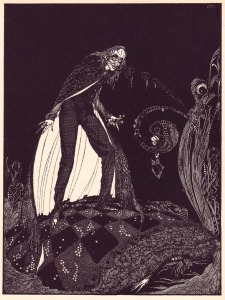
Poe’s “The Tell-Tale Heart” inspired “night terrors that lasted for years.” (Harry Clarke’s 1919 illustration.)
With Barker, my favorite writer when I was in my teens, I experienced a paradigm change. I became a gleeful participant in the land of imaginary horrors, rather than a frightened victim. I ended up consuming so much horror that I essentially inoculated myself from the night terrors.
I would bet the idea that I’m best known for horror stories would be a big shock to 10-year-old me. Around 4th grade or so my dad made me read The Lord of the Rings, because he thought it was the greatest novel ever written and because he was sure I would like it. On that second part, absolutely, he was right. Maybe the first one, too? But anyway, I developed this hunger for all things Tolkien. We lived at the time in Wise, Virginia, a coal town high in the Appalachians. There was no bookstore. There were a couple of other kids who liked fantasy, but didn’t share my obsessive need for it, or at least not my precise interests — as I recall, one buddy was a huge Larry Niven fan.
There was no fandom community in Wise. My parents enjoyed sci-fi and fantasy but were not particularly knowledgeable about what was out there. So I was on my own figuring out how to find other books for that fix.
The library in Wise became the center of my world. I got my mom to mail order a book of essays on Tolkien, and I’d track down the books mentioned there. My parents gave me a book that was essentially lists of recommended reading for teenagers, and I ignored everything except the chapter on science fiction and fantasy in the very back. Those two sources led me to C.S. Lewis, Charles Williams, Stephen R. Donaldson, Madeleine L’Engle, Ursula K. Le Guin, Isaac Asimov, Susan Cooper, T.S. Eliot, Franz Kafka, Lovecraft, Roger Zelazny, Anne MacCaffrey, Samuel R. Delany, Harlan Ellison, Lloyd Alexander, John Christopher, Michael Moorcock, and led me to do things like read Le Morte d’Arthur.
I imagine 10-year-old me would have expected 45-year-old me to be writing epic fantasy instead of body horror. As an adult, though, the writers who have been real revelations to me, who’ve stirred primal surges of imagination — Thomas Ligotti, Brian McNaughton, Laird Barron, Livia Llewellyn — have all tended to lean toward horror. I started at some point to find epic fantasy tiresome. I blame Robert Jordan.
Generally speaking, in my own writing, I try to emulate what inspires me. When I was writing The Black Fire Concerto for Haunted Stars, I made a deliberate choice to aim for the kind of wild, gonzo, big-scale surreal events found in Moorcock’s Eternal Champion books. Rod Belcher, a.k.a. dark fantasy novelist R.S. Belcher, who also lives here in Roanoke, read Black Fire Concerto and correctly deduced that there’s a huge slab of Zelazny slathered in there too. 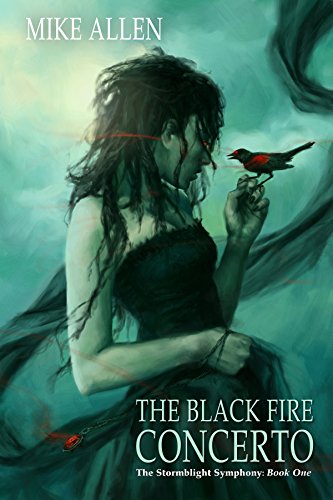
I’ll slip direct homages in too. My short story “Her Acres of Pastoral Playground” from the Cthulhu’s Reign anthology contains a huge shout out to Thomas Ligotti’s “The Cocoons,” though when Tom read it himself, he didn’t notice. (I couldn’t resist pointing it out to him.)
Right out of the gates, then, you were drawn to the “literature of the fantastic,” and both your writing and editing has circulated through this broad field. Yet, as you suggest, to the probable surprise of your young epic-fantasy-fanatical self, much of your prose fiction could be, and often has been, described somewhat more narrowly as “horror.” The label is especially often applied to your 2014 collection Unseaming, which deservedly earned rave reviews in venues including Rue Morgue Magazine, where it was favourably compared to Clive Barker’s short fiction. In his introduction to Unseaming, Laird Barron locates your work at “the forefront of a ‘New New Wave'” of horror.
It was awful nice of Laird to write that!
What importance does the term “horror” have for you? Do you find this to be a congenial way to describe some, or all of your writing? What are some of the (dis)advantages of being perceived, or self-representing, as a horror writer?
I love horror. Left to my own devices, my first choice for entertainment will usually be a a collection of horror stories or a horror film. (You wouldn’t necessarily glean that from the stories I gravitate toward as an editor, which tend towards the ornate and surreal. It’s a quirk even I don’t completely understand. Though my favorite films of all time aren’t horror films: Dr. Strangelove, 2001, Brazil, The Adventures of Baron Munchausen, The Wild Bunch.)
I suppose horror permeates a lot of my writing, even when I don’t intend it deliberately. I’m drawn to the downbeat, to impossible choices, irreparable damage and mortifying fates. Those moves are more conventional in horror, though sf and fantasy stories, especially short stories, definitely sport their share. (Some of the short stories I encountered as a kid that really stuck in my craw, like “Descending” by Thomas M. Disch or “One Ordinary Day, with Peanuts,” by Shirley Jackson, feel like horror stories even if they don’t read like them in the conventional sense.)
I’m not shy about calling myself a horror writer, because people grasp what that is, and I believe, though you don’t find horror sections in bookstores anymore, it’s become a much more acceptable thing to trumpet in this pop-culture saturated 21st century. I spent more than a decade trying to explain to people what a “science fiction poet” is — compared to that, saying “I write horror” goes down pretty smooth.
As you note above, your 2016 story collection, The Spider Tapestries: Seven Strange Stories instead collects fiction oriented more toward sci-fi and fantasy. Perhaps as a result, it doesn’t have the same tonal and thematic concentration that marks Unseaming. In her introduction to the collection, Nicole Kornher-Stace portrays this as the “throwing down of a gauntlet to anyone who so much as thinks of pigeonholing the versatile body of work of which Mike Allen is capable.” Was that a gesture you were consciously making? What effect do you think it had on the book’s reception, or your perception by readers who knew your name mainly through Unseaming?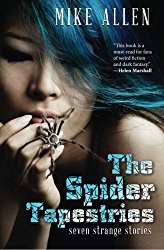
The lesson I learned with The Spider Tapestries is that readers who buy horror want more horror. I’m not a complete fool, though: I never expected a slender volume of intensely surreal science fantasy works to keep pace with Unseaming, where the weirdness all falls within horror parameters. (I’d be a liar, though, if I claimed I wasn’t hoping for it!)
What Nicole wrote (again, super-kind words) about me throwing down a gauntlet was true in the creation of the individual stories, not as much in the assembly of the book. For example, the ending of my novelette “Sleepless, Burning Life,” in which (spoiler alert?) I run through all the possible consequences of Jyshiu’s next, story-concluding choice, then don’t tell the reader what she did, was 100% deliberate author malfeasance. In “Twa Sisters” I set out to see how far I could push treating science fiction prose like concrete poetry. (In that sense it’s an homage to Harlan Ellison’s “The Region Between,” at least in execution if not in subject matter.)
The base raison d’etre for the book might seem pretty dull: I felt I needed an additional reward option for the Clockwork Phoenix 5 Kickstarter campaign, and it occurred to me these stories left out of Unseaming might work well together.
An aside: I’d been playing with and shopping around various versions of Unseaming for years. Anita, who has for many years organized the contents of our zine issues and anthologies so that they have a thematic flow, also organized Unseaming. Laird once suggested to me that I should be willing to toss in stories from other genres (see his own sf story “Ears Prick Up” in his collection Swift to Chase) but Anita felt the book should hew consistently toward horror, and I must admit I’m grateful for her instincts.
But with any luck, readers will continue to discover The Spider Tapestries and be surprised by the things I spring on them.
Kornher-Stace’s calling your body of work “versatile” is, if anything, an understatement. Having read a broad swath of your published writing at this point, I’m awed by the range of voices, modes, forms that comprise your corpus. There are a couple of things, however, that seem to me quintessentially “Mike Allenesque” characteristics, and I’d like to ask your thoughts on these.
The first is a fascinated, and fascinating, emphasis on visceral metamorphoses, one that sometimes causes your work to swing close toward what I would describe as “body horror” and the grotesque. Amal el-Mohtar’s introduction to Hungry Constellations phrases this in a particularly vivid way when she writes that Mike Allen “is a man who delights in breaking bodies: butchering, splitting, splaying, dismembering, then seeding landscapes with viscera until they too become bodies—bodies invaded, bodies studied, bodies contaminated. This is a man who carves words into and out of bodies, be they skin or sapphire, corpses or constellations. But somehow Allen skirts gore and clinical detachment both: there is a precision and an economy to his horror that’s reminiscent of clockwork, architecture, astronomy.”
There is something in her characterization of a precision that is more aesthetic than clinical, a grotesquerie that is more architectural than, to paraphrase Stephen King, “going for the gross out,” that cuts to the heart of your work, I think.
What do you think of this characterization? Why do you think you “delight in breaking bodies” in these ways?
I’ll admit, I was taken aback at first by Amal’s description, but after some contemplation I had to concede it was a fair cop. It’s there in my earliest published work, back in the 1990s.
My best guess: it’s an accumulation of factors. My father taught biology at the University of Guam and later at Clinch Valley College in Wise, and I remember, on visiting his offices and classrooms, being fascinated by the large plastic anatomy models — you could open them and remove the internal organs, the pieces of the brain, the eyes, you could open the heart up and look inside it. Also all the strange creatures from many phyla floating in formaldehyde, and the even weirder invertebrates described in textbooks. I never did get to see the biology department’s cadaver, but I knew it was there inside its coffin-shaped tank. Somehow, though, none of these things ever scared me the way Poe or Lovecraft did.
And yet, I would have these astonishing nightmares, incredibly vivid, where streets would be lined with veins and intestines and people would suffer gory fates worthy of the grossest splatter films — which I had never watched! As a kid, when something too scary came on the television, I’d flee the room. Those dreams, I’m certain, guide my aesthetic as an adult.
I mentioned Barker sparking my own transformation. I think The Books of Blood connected parts of my mind that weren’t consciously working together, the part fascinated with the wilds of biology and the part terrified of but unable to look away from the body under the sheet (as King so eloquently described the love of horror in Night Shift.) Movies like Return of the Living Dead, Evil Dead 2 and Reanimator served the same purpose in a much cruder way. And of course there was Carpenter’s The Thing.
Those sources have a lot of literal partitioning and repurposing of flesh. Once you venture into poetry, though, where the metamorphoses can be simultaneously literal and metaphorical, things really get fun. From there, I guess that’s how I get to stories like “Monster,” where you have a serial killer who’s also a math equation.
The second, and closely related “Mike Allenesque” characteristic that threads through most of your work, even at its darkest, its most violent, and grotesque, is a certain celebratory quality, a rapt reveling, an almost rhapsodic delight in the linguistic expression of entity and being, no matter how agonized, entropic, or abject. I wonder if this delight is related to what Thomas Ligotti has characterized as the “fun” underlying your writing. In his words, “ not ‘good’ fun, and certainly not ‘good clean’ fun,” but “laughter in the dark—unnerving, serious laughter.”
What, for you, is “fun” about your work? What is serious? What’s the difference?
This is really challenging to answer — but thank you for asking!
All of it has to be fun to some degree, or why do it?
At my littlest, way back in the haze of the first things I remember, my favorite toys were letters of the alphabet. I think that continues in a love I have for wordplay. I often end up pruning back that tendency in the finished product so it doesn’t distract from the narrative, though I can’t resist leaving alliteration and internal rhymes here and there.
The notion that “demented” and “entertaining” can be synonyms arose in my teen years. There were all those 1980s horror movies that were both scary and funny. Those were also the years, much to the chagrin of my parents, that I discovered my love of heavy metal. For some, these teen passions fade, but for me, this particular one never has. The music could trigger these crazy fugues of imagery that spouted from a similar vein (so to speak) as those super-intense nightmares I had when I was younger. My story “Let There Be Darkness” is basically a transcription of one of those fugues, inspired by Slayer’s “South of Heaven.”
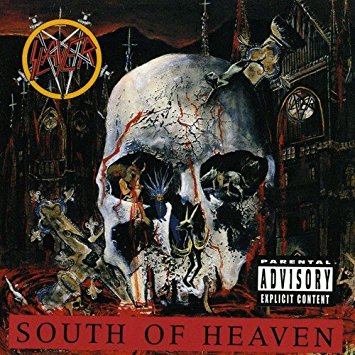
“Let There Be Darkness” is inspired by Slayer’s “South of Heaven.”
The story in Unseaming that is pure fun-for-fun’s-sake is “An Invitation via E-mail,” which has occasionally been dinged for being shallow and mean-spirited compared to the other stories. So be it, it’s short and fun to read aloud.
Beyond “demented,” there’s “disturbing.” My favorite novels when I was young tended to be books like The Lord of the Rings and later The Chronicles of Amber, that swept me up in the grandeur of their inventions. The short stories that stuck with me the longest, though, were the ones that disturbed me, like “Pickman’s Model” or “Descending” or “I Have No Mouth, but I Must Scream.” So when I am writing, I have this real Imp of the Perverse impulse to aim at recreating those experiences for whomever ends up being my reader. I can even experience a kind of “Eureka!” glee when I sense that I’m on track toward that goal. I think Tom was able to peer with laser precision through the words and perceive the Imp at work.
All the above makes it sound like none of this is serious for me, but there are things I’m deadly serious about. My anecdotal sense of the world we live in is that we humans lie to ourselves all the time about how good we supposedly are, that we’ve constructed a society that at best pays mere lip service to what’s good and at worst actively punishes the selfless while rewarding the selfish. These notions, and the anger they inspire, also inform my writing, though not in a way that’s intended to convey a prescriptive message.
While we are back on the subject of Ligotti, you’ve mentioned your admiration for, and an homage to, his work above. Can you elaborate about your reception of his work? What aspects of it have influenced your writing, and how? How did Ligotti come to read and review your collection Unseaming?
I’m not 100% certain whether the first thing I read by Tom was “Notes on the Writing of Horror: A Story” in David Hartwell’s Foundations of Fear anthology or whether it was Grimscribe: His Life and Works. I recall finding Grimscribe in a bookstore (it had a blurb comparing him to Barker, an instant hook for me), then soon after special ordering Songs of a Dead Dreamer.
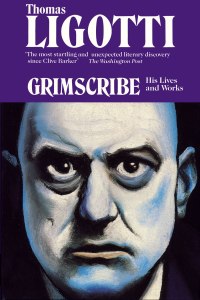
A Clive Barker blurb atop a portrait of Megatherion introduced Ligotti’s oneiric entropy to some…
His stories have a dreamlike quality that hit me where it hurts so good. By the time I encountered Ligotti’s works, I was a huge fan of all things with a Lovecraftian echo, and I appreciated how he shifted cosmic horror into psychological and metaphysical realms. Grimscribe is full of spectacularly creepy stories, like “Nethescurial,” which features an ending that’s both terrifying and darkly hilarious. If imitation is the sincerest form of flattery, my poem “No One” sincerely flatters that story.
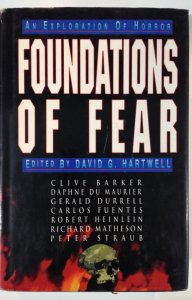
The late, lamented David G. Hartwell’s seminal collection introduced it to many others….
I think my world view might be at heart just as dark as his, but whereas his is articulately thought out, mine is more of a gut reaction, or a reaction involving guts, perhaps?
The short answer to why he wrote me a blurb: I screwed up my courage and asked him. Longer context: from 1999ish to 2005, I was a volunteer editor with DNA Publications after they moved from Massachusetts to Floyd, Virginia. Publisher Warren Lapine made my poetry zine, Mythic Delirium, part of the DNA stable, which meant it became a sister magazine to Weird Tales, which at the time was regularly publishing new Ligotti tales. (Including one of my absolute favorites, “Purity.”) Generally speaking, at DNA I learned that getting “name” authors to participate in things really involved pulling one’s grownup pants on and asking, because they’re not necessarily going to say no. (Though if they do, don’t argue, take no for an answer.) Specifically, I first reached out to Tom to see if he’d contribute to a project, and though he declined, I shared my poems with him and he had nice things to say. I was grateful to find the door still open as Unseaming came together.
Back in 2014, while PstD was still a paper journal and Dominik Parisien was our poetry editor, your poem “Dearly Beloved” was the featured poem in our 5th volume. I’m curious, first, about why you enlisted Dominik to curate and edit the selection in Hungry Constellations. In her introduction to the collection, Amal el-Mohtar characterizes him as more of a collaborator than editor – is that a fair assessment? What was that process like?
Dom had made the mistake of telling me how much he admired my poetry, and demonstrating some familiarity with it beyond just stumbling across a poem or two on a website hither and yon. A dangerous thing to do!
Like The Spider Tapestries, Hungry Constellations has mundane origins. When I ran the Mythic Delirium Kickstarter in 2013, I offered as one of the rewards an omnibus collecting all of my poems. When it came time to put that together I had second thoughts. We writers love all our babies to some degree, but some of my published poems I’m just not super-excited about including in a book intended as a showcase.
I selected and ordered all the poems in my previous big collections, Strange Wisdoms of the Dead and The Journey to Kailash. It occurred to me that making this next book a “new and selected poems”-type volume would add esthetic value, but that would require enlisting someone else’s editorial vision. Though his super-successful editing collaborations with Navah Wolfe were still in the future, Dom’s interests in and knowledge of poetry and weird fiction generally and in my work in particular suggested to me he’d be a good choice, and bless him, he was willing to do it. (Worth noting, also, Dom had previously done editorial work for the Ann VanderMeer incarnation of Weird Tales, where “An Invitation via E-mail” appeared.)
I guess you’ll have to judge whether this sounds like collaboration. Essentially, I presented my entire twenty-odd-year accumulation of poetic work to him and asked him to decide what formed a coherent book. (Piece of cake, right?) I’m thrilled with the job he did. There are poems that I would have included if left to my own devices that he didn’t, and vice versa. Even at the very end, when I decided to make a couple additions to the “New and Uncollected Poems” section, I cleared them with Dom first and asked for his guidance as to where to put them. A fascinating final bit came when Amal was reading the book for her introduction and she and Dom discussed his choices, with me carbon copied on the messages. Amal recognized that Hungry Constellations was very much Dom’s creation, with me having provided the clay.
Hungry Constellations also fills what I perceived as a void: it’s my only poetry collection available in e-book form.
In the PstD 5 introduction to “Dearly Beloved,” you cite “the photographic montages of Italian artist Allesandro Bavari” as the inspiration for the universe that poem shared with your Locus-recommended stories “Twa Sisters” and Still-Life with Skull,” both of which were subsequently reprinted in The Spider Tapestries. Can you tell us about the genesis and development of the world these fictions share? Is it a world to which you return, or will return, in more recent work?
My friend Patty Templeton came across Bavari’s work on an art blog she followed and shared it with me. I’ve never met or corresponded with Bavari so I doubt he knows what a debt I owe him, but his twisted photo collages were like slides from my most intense nightmares. He’s made short films, too, that are just as wild.
Nicole Kornher-Stace had issued me a challenge to write a short story the way I wrote poetry. She had use of language in mind, but I decided to bend those rules and take a stab at a story that imagined the surreal Boschian landscapes in Bavari’s images as real places, a technique I had used in a series of poems about 20th century artists called “Disturbing Muses.” That story became “Twa Sisters.” The story uses some concrete poetry techniques, too, which made it really hard to find a publisher, heh. (Bless you, Not One of Us!) I took a second stab at working in that bizarre world without the visual prose tricks, which became “Still Life With Skull.”
The series by Bavari that inspired me most bears the title “Sodom and Gomorrah.” Despite the elements of horror in some of those works, there’s also an anarchic pansexual delight that I fully incorporated into these stories, where sex, gender and physiognomy can be switched like jackets, so the notion that someone would be judged by their sexual orientation or appearance has become alien as the void. On the downside, I suppose, I also imagine this world as a place where all the constant, invasive surveillance we fret about here in the U.S. via NSA collusion with Google, Facebook, etc. is something that most everyone simply accepts as being as inevitable as death and taxes.
I’ve got a novelette sitting on the back burner, “The Threefold Feather,” that will probably be my final venture into this world. The first draft is finished. Someday, I’ll get back to it…
In the same introduction you describe Bavari’s work as “visual speculative fiction masquerading as fine art.” I love the characterization; can you say a little more about what you think constitutes visual speculative art? What is it about Bavari’s images that inspired this characterization? Who are some other artists whose work you’d align with the same category?
It’s part of what attracted me so much to his work: to me, regarding the photos in his “Sodom and Gomorrah” series seem very much like peering into a parallel word, where the rules of existence must be quite different from ours, and yet it’s easy to imagine that there are rules of existence, that these aren’t just abstract doodles.
Even as a kid I was drawn to art that had this feel. I frequently checked out a book on Salvador Dali from the Wise library for that reason. I’ve never based any of my own writings on his work, though — maybe it feels like too obvious a thing to do?
The works of Remedios Varo absolutely have that feel for me — somebody I may try writing a “Disturbing Muses” piece about her. I also had that feel attending the Wassily Kandinksy exhibition at the Guggenheim in 2009, which eventually begat the poem “Kandinsky’s Galaxy.” Through my day job as an arts columnist I from time to time encountered works by contemporary artists that also, to my mind, have this feel, such as painter Bill Rutherfoord or textile artist Beverly Semmes, whose photographs were the inspiration for the antagonist in my short story “Longsleeves.”
Also on the topic of inter-influence between visual and literary speculative art, your wife Anita, whose influence on your writing you often acknowledge, is an accomplished visual artist. Can you (and perhaps Anita herself) tell us more about the relationship between her art and yours? Some of the ways they feed into, and off of, one another?
I just discussed this with Anita a little bit. She can write, but prefers to draw. I can draw, but prefer to write. We definite can work together in a symbiotic way when the need requires. Most important of all, we get each other.
Anita is definitely an artist whose work can have that “view into another world” feel. Her one and only solo show to date, “Beyond the Borders,” held in 2015 at a gallery here in Roanoke, was a gathering of fanciful creatures and monsters, some small as your fist, others so big and heavy it took four people to carry them from the truck to the gallery. Her own background in biology, specifically horticulture, played into it. (You can see some of the creatures from that show on the covers of Mythic Delirium 1.3 and 2.3.)
And, much like writing and editing, the visual arts require lots of icky self-promotion and the willingness to keep wading forward through avalanches of rejection, and Anita’s not super-thrilled at the prospect of either, so she’s never pushed her art to the degree I’ve pushed my writing. In her own words, Anita gets weirded out by the prospect of the limelight and prefers the shadows. Even so, she’s pulled off some really cool things, like that solo show, and I’m hugely proud of her for it.
She has a painting called “The Forest Lord,” of a mythical deer with antlers like clusters of tree branches crowning its head, that really resonates with me on a level I can’t explain. A character inspired by that image appears in The Black Fire Concerto and then reappears in somewhat different form in “Longsleeves.” They’re not the exact same character; those fictional universes aren’t connected, at least not yet, but clearly they’re linked on some other level. “Longsleeves” is almost like a funhouse mirror inversion of Black Fire Concerto, and the reappearance of the Antlered Man is a big part of what makes that so.
As I formulated the first questions for this interview, I was a little shocked to learn that your zine, Mythic Delirium, was going on hiatus after having been a vital touchstone in the world of indie weird and fantasy writing for the course of its 20 year career. Can you tell us more about the origins and history of the zine, and, especially, why you’ve decided to shelve it right now?
First, thank you for the kind words!
I explained both the history and the decision in some detail in the editorial for the final issue, it’s tempting to cut-and-paste, but that would double the length of this interview. I’ll attempt the Cliff’s Notes version.
When I decided to start Mythic Delirium, I’d already done two projects as an editor, the anthology New Dominions: Fantasy Stories by Virginia Writers (1995) and the e-zine Event Horizon (1997-98), which nowadays is mainly remembered as a footnote to Ellen Datlow’s e-zine of the same name. I was interested in continuing my editing ventures but I wanted to do it in a way that I could afford in terms of both money and time, and I didn’t want to answer to anyone but myself. My idea for how to do this was to put out a biannual poetry zine, and those were the mundane origins of Mythic Delirium. I mentioned earlier that once I was with DNA, Warren Lapine offered to take over the publishing end, which is how Mythic Delirium became a sister zine of Weird Tales. So far as I know, Mythic Delirium was the only genre poetry zine ever to be in a position like that — it wasn’t distributed on newsstands, but it was advertised in magazines that were, and included in subscription packages. It helped the zine build up a large enough base that when we parted from DNA in 2005 (and Warren generously let us keep our subscribers), we were able to keep going on our own for a pretty long time.
Fast forward to post-2013, when we reinvented Mythic Delirium as a webzine that included fiction as well as poetry. I am as proud of this chapter of the zine’s life as I am of everything that came before. However, the zine made very little money on its own — the bulk of the support it got was essentially a side effect of the Clockwork Phoenix Kickstarter campaigns. My sense is that the field appreciated Mythic Delirium, but it was a passive appreciation; there were no flurries of social media excitement when new issues came out, and reviewers would for the most part ignore it. I was putting a lot of time into editing and formatting, and creating all those different e-book formats drained away time I could use for my own writing; there were nowhere near enough subscription purchases to justify paying someone else to do that labor. I had to coldly consider ratios of work invested vs. reward, and I concluded that, barring some miracle, I would end the zine in Spring 2018, giving it a classy farewell instead of just shutting off the hose. I at least got enough support to make that possible.
If I remember right, I reached that decision in 2016, and even before then it had loomed as a possibility.
Funny thing about me: I’m an agnostic, but I believe, perhaps irrationally, in guidance offered by serendipity. There were times, earlier in Mythic Delirium’s history, when I considered shutting it down, but something always happened that convinced me the time wasn’t right. This time it worked the opposite way: things that might have made me reconsider resoundingly did not happen. There were other things that happened, though–I’ll keep those details private–that made me happy I didn’t have much longer to go.
That knowledge also made me work even harder to make the final run of issues special. So I have no regrets.
We’re reprinting your short story, “Tardigrade,” as part of the feature. Can you provide us with a little context for the story – its inspiration, when and how you wrote it, what it is about the story you continue to find most effective or interesting, its prior publication history?
I started “Tardigrade” as a lark back in late 2013. At first, it was just a vignette meant to scare a friend of mine who I thought might squirm while reading about bad things happening to teeth, and who has a phobia of slugs. (The original title was “We Make Holes in Teeth,” the Cavity Creeps chant from the old Crest commercial.) That friend is pretty unflappable, and to this day I don’t know if they found that vignette the least bit scary, as I didn’t hear back after I sent it.
I love visual experiments in text, and in its first form the story was just descriptions of creepy Internet videos and the commands to activate them, though the notion that the things depicted were connected wasn’t as clear as I would have liked it to have been. The story want on the back burner for several months while I drafted The Ghoulmaker’s Aria (the sequel to The Black Fire Concerto) and when I came back to it I decided that for it to really work, we needed to see the person watching the videos. At that point it started to morph into “Tardigrade.” A couple months later I received an unexpected invitation from Jason V. Brock to contribute to his anthology A Darke Phantastique, if I could turn something around within a week (!!!) — I finished up “Tardigrade,” Jason loved it, and before the end of the year it was out in print, one of the few times I’ve had something snap together that fast.
Where else can our readers find your work (both online and in print) and, for those who are just beginning to explore it, where would you suggest they start?
If I might indulge in a radio show-style deep cut: if you’re interested in a varied sampling of my poetry, you can go to descentintolight.com and check out this entry, which links to a series of posts I did for National Poetry Month in 2011 in which I reprinted 13 of the poems collected in The Journey to Kailash, and discussed in detail how and why I wrote them. I also did audio readings of each poem, which you can listen to if you enable Adobe Flash.
If you want more free samples, a number of my stories have been reprinted online or adapted into podcasts. Apex Magazine reprinted both my Nebula-nominated story “The Button Bin” and its novella-length sequel “The Quiltmaker.” Wilson Fowlie’s reading of “The Button Bin” at Pseudopod has been praised as one of the site’s best podcasts, period. StarShipSofa has a reading I recorded of “Her Acres of Pastoral Playground” that incorporates sound effects. Tales to Terrify has a great reading by C. S. E. Cooney of “The Red Empress,” the first chapter in The Black Fire Concerto. Setsu Uzume made a delightful recording at Podcastle of my new-ish story “The Cruelest Team Will Win.”
And there’s plenty more out there. Most of the books that I’ve mentioned remain in print and available through online retailers. The Mythic Delirium Books website has links to most of the ones actively available, and my author home page has links to a few more.
Thanks, Mike, for sharing these generous responses, and this wealth of resources, with our readers!


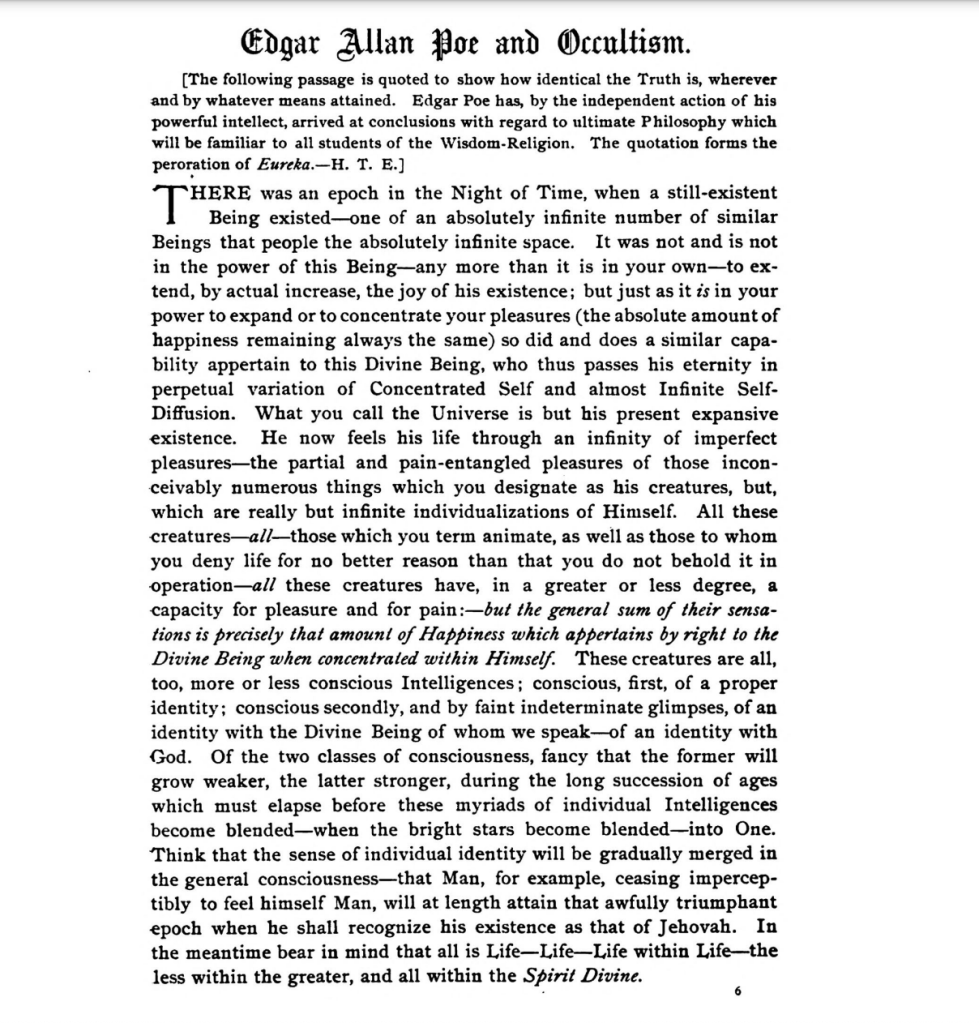
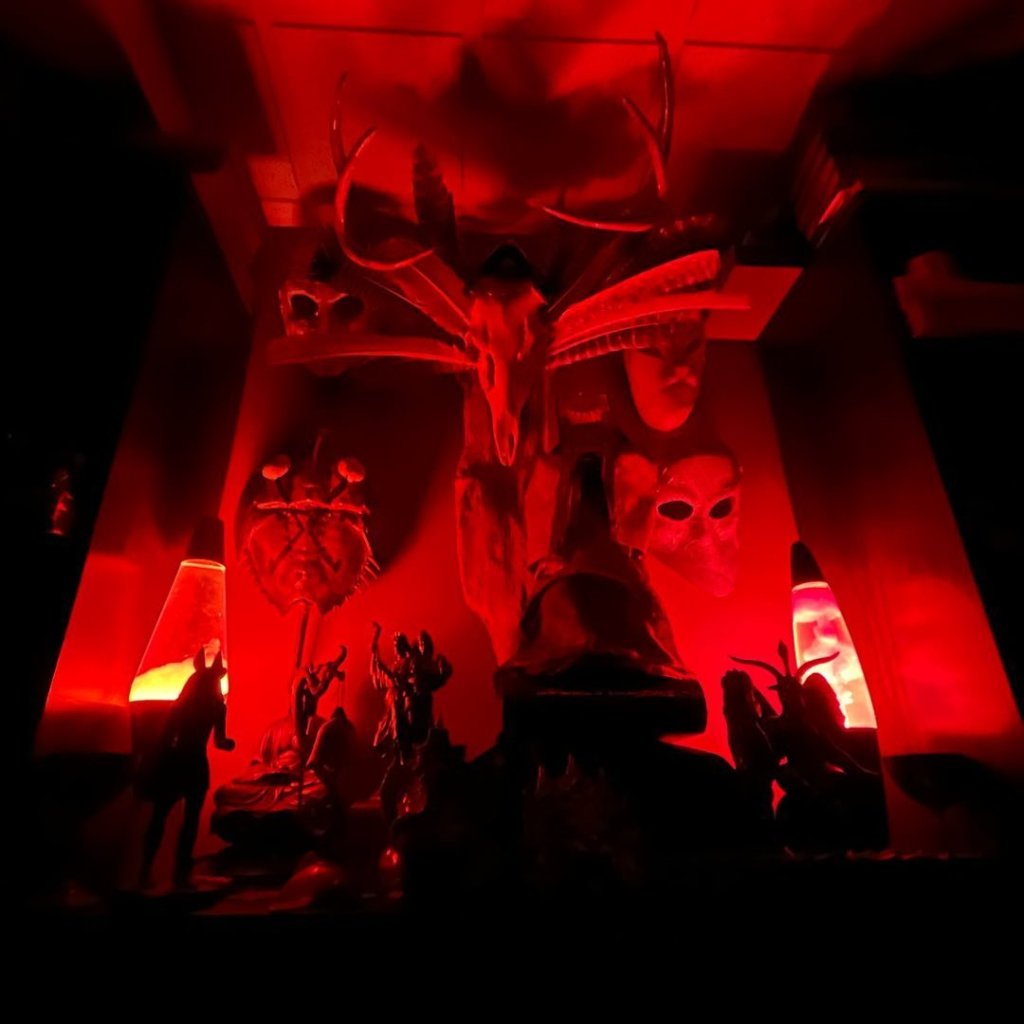


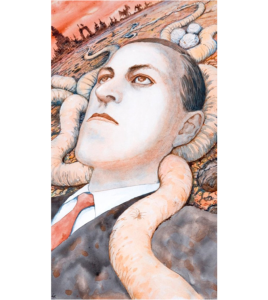

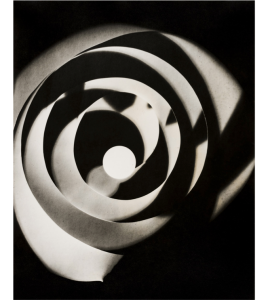
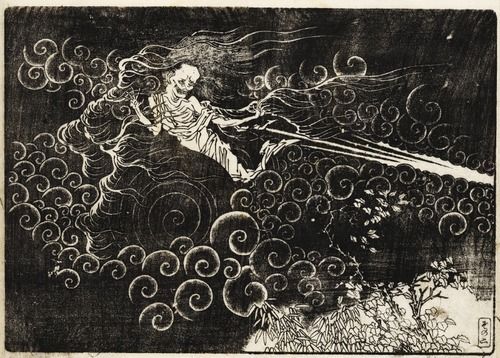
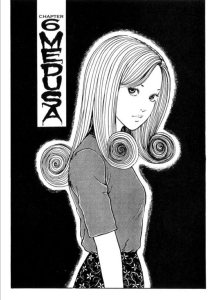

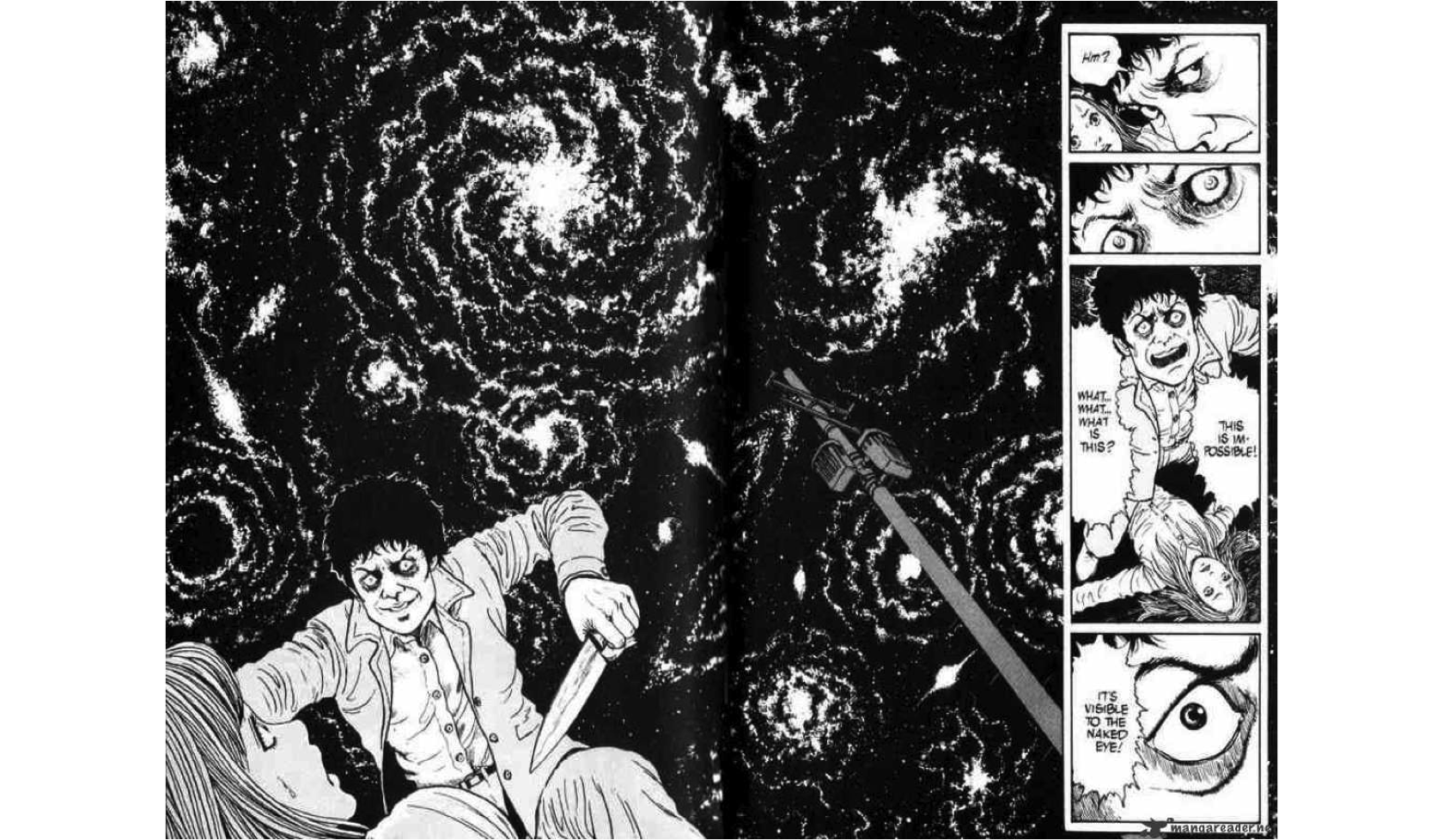
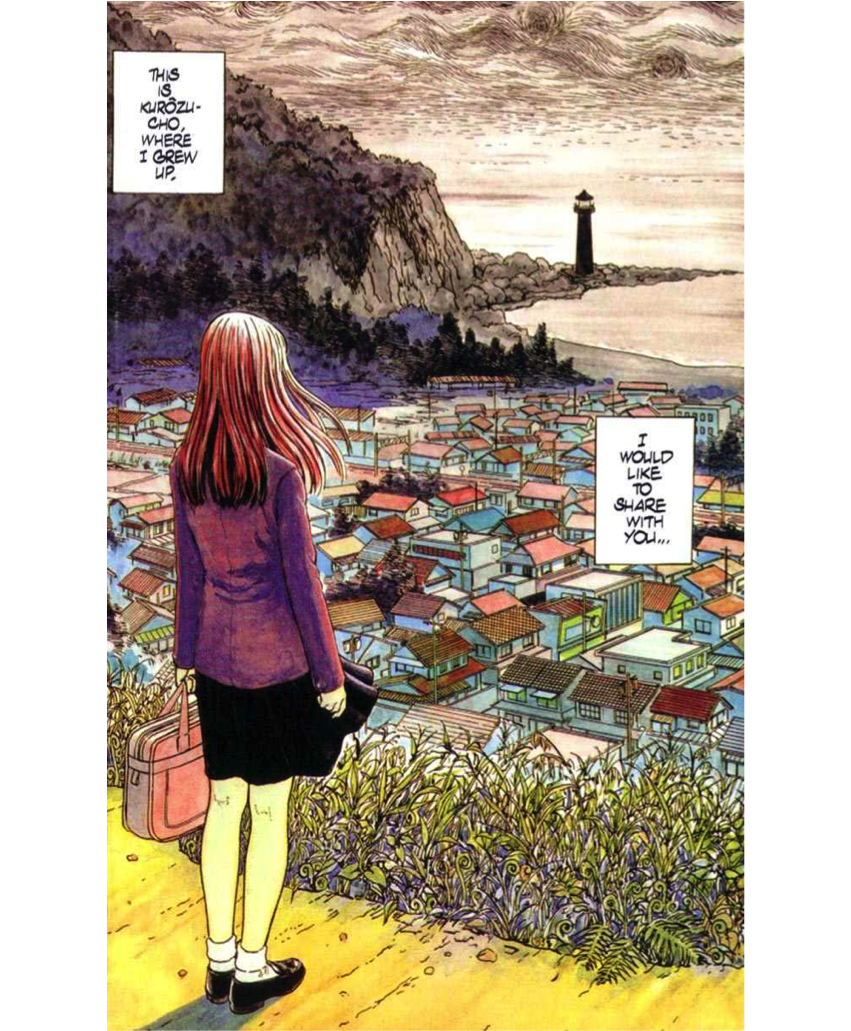
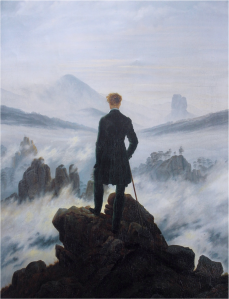
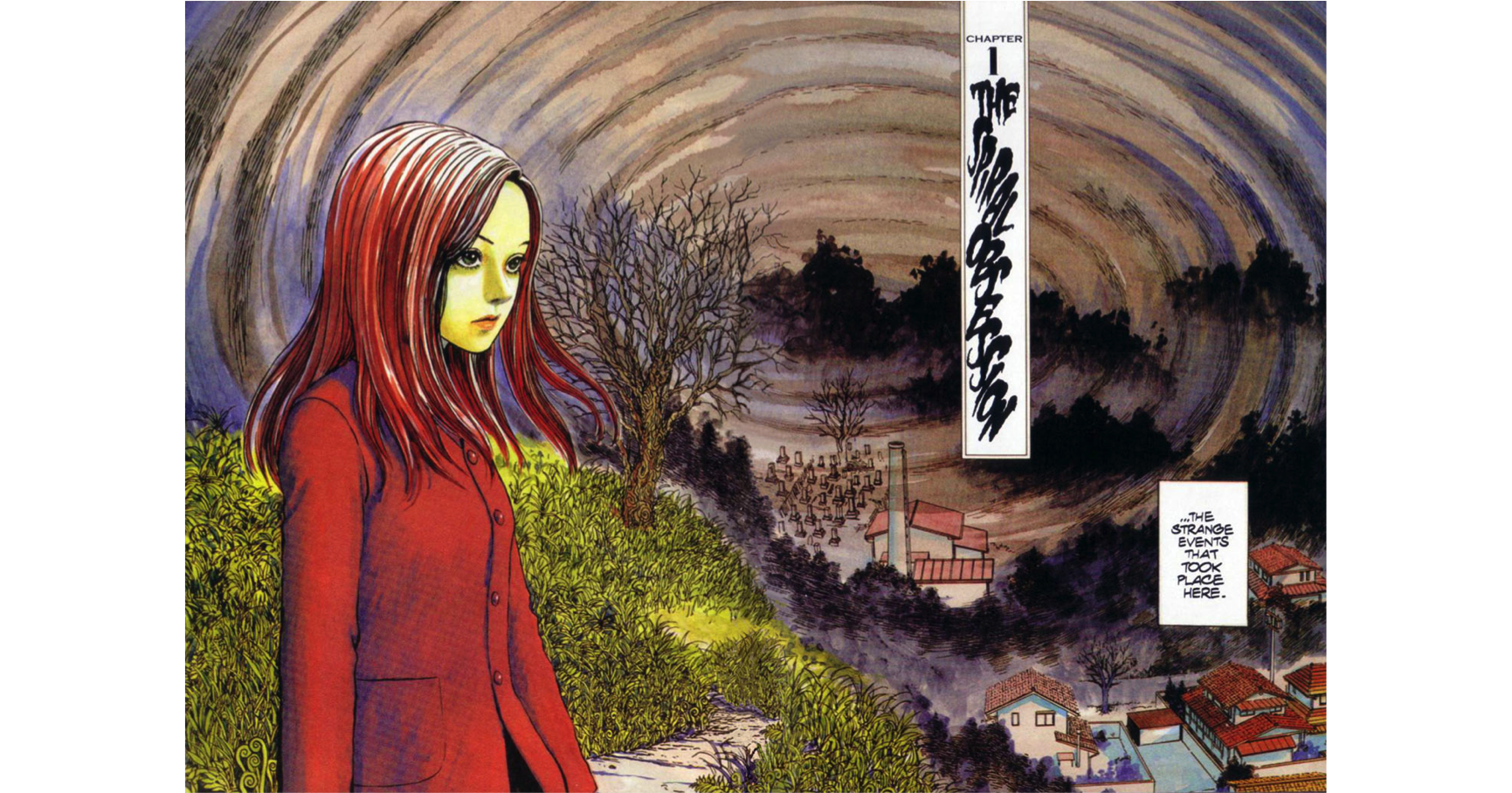
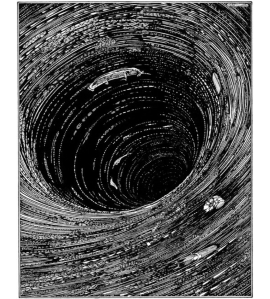
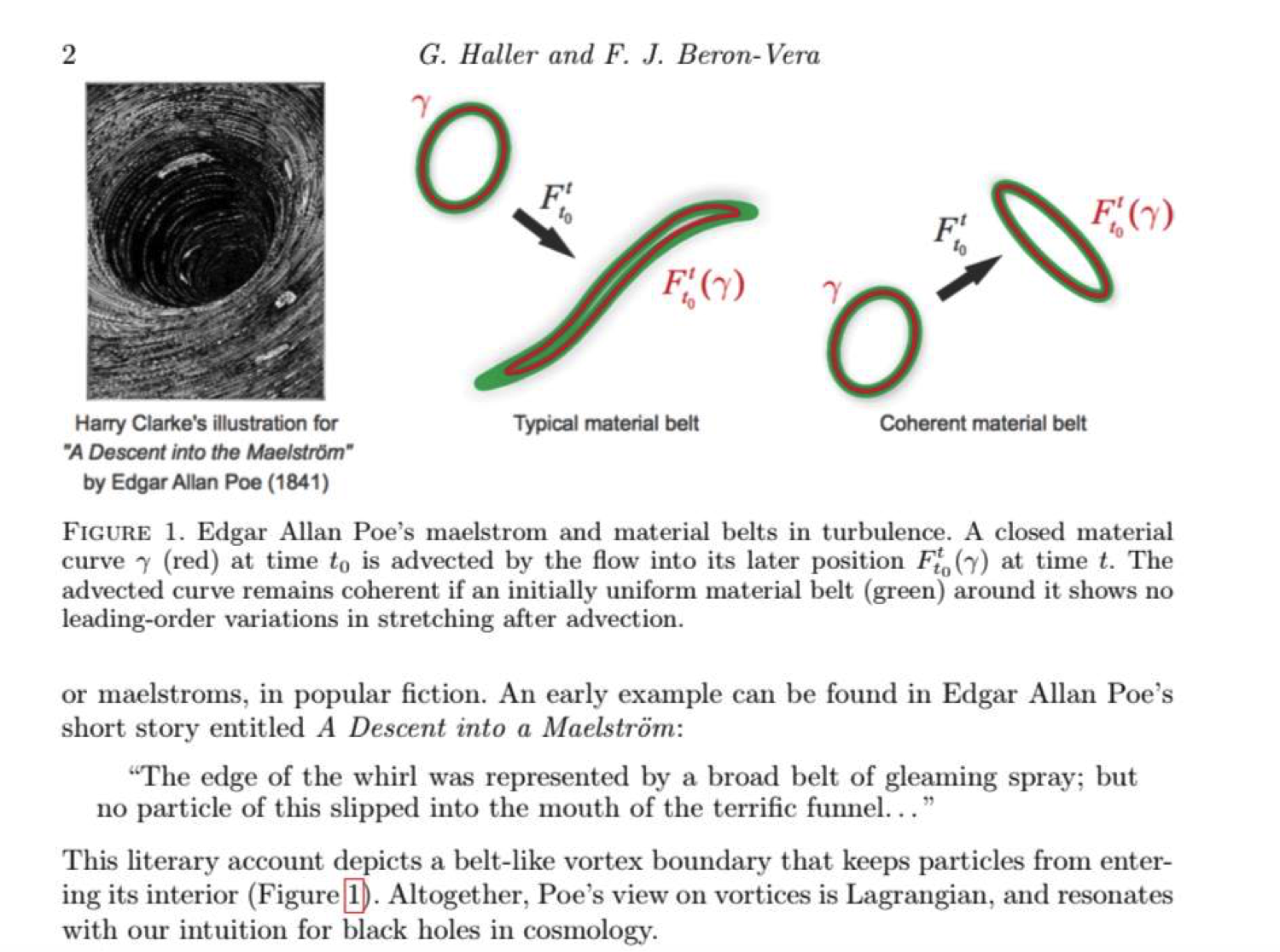
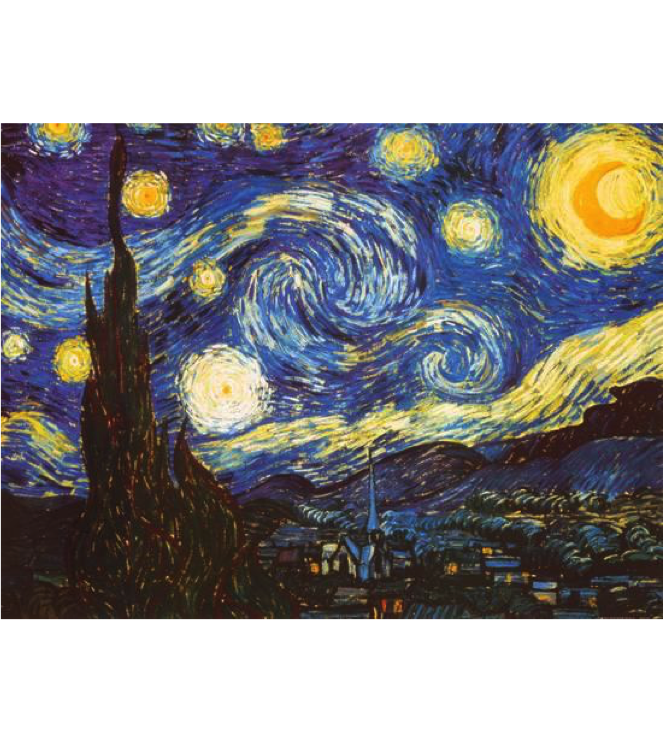
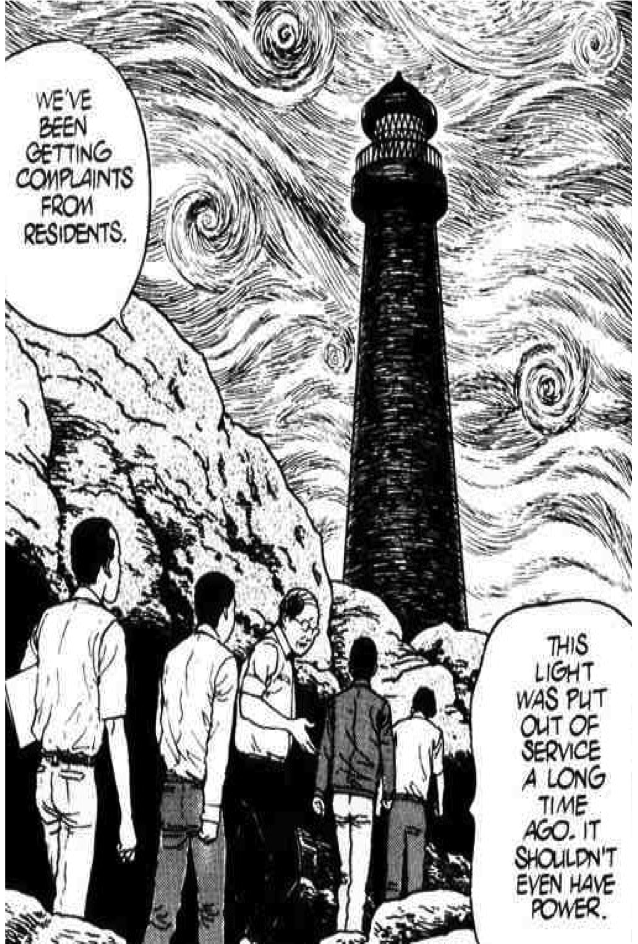




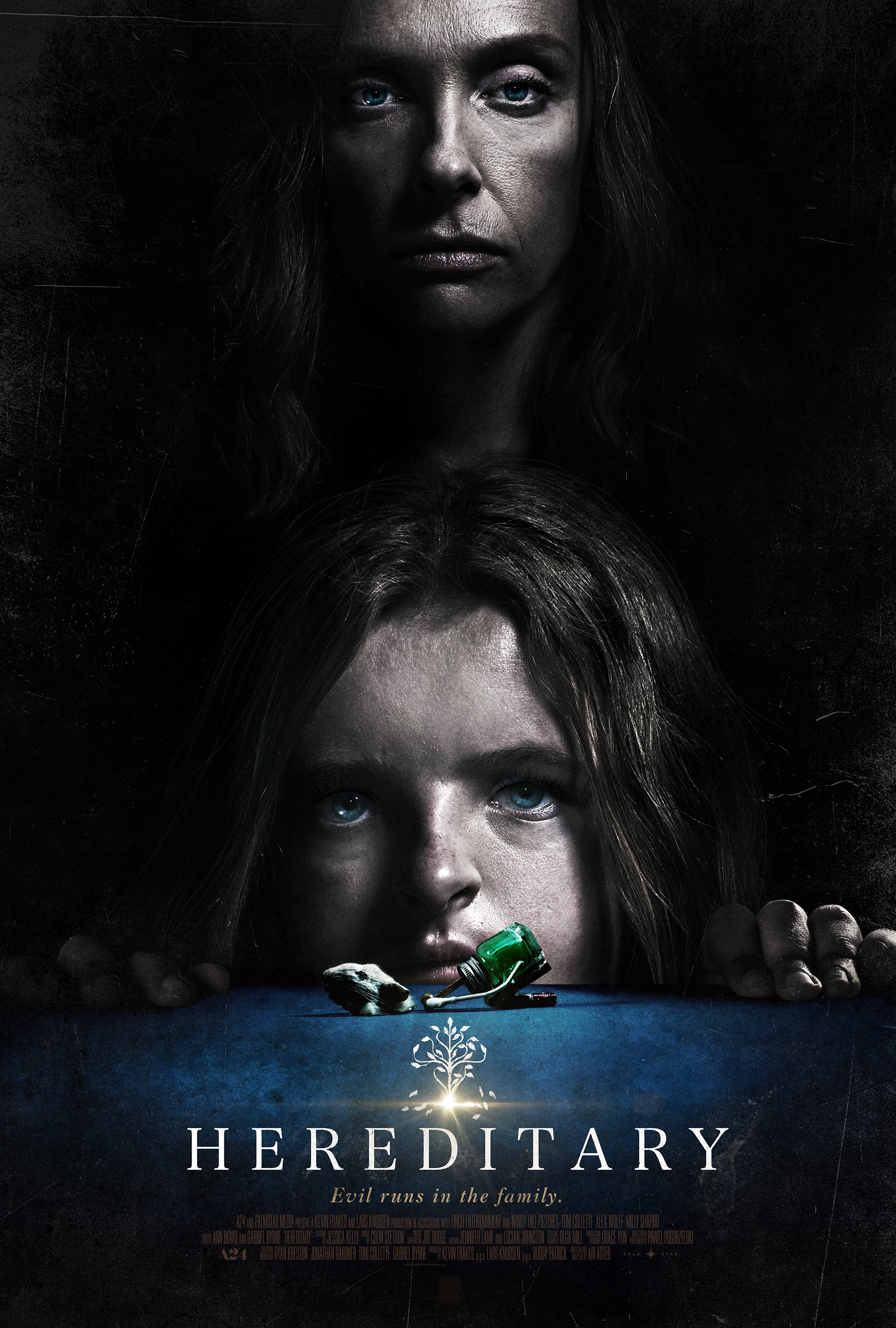
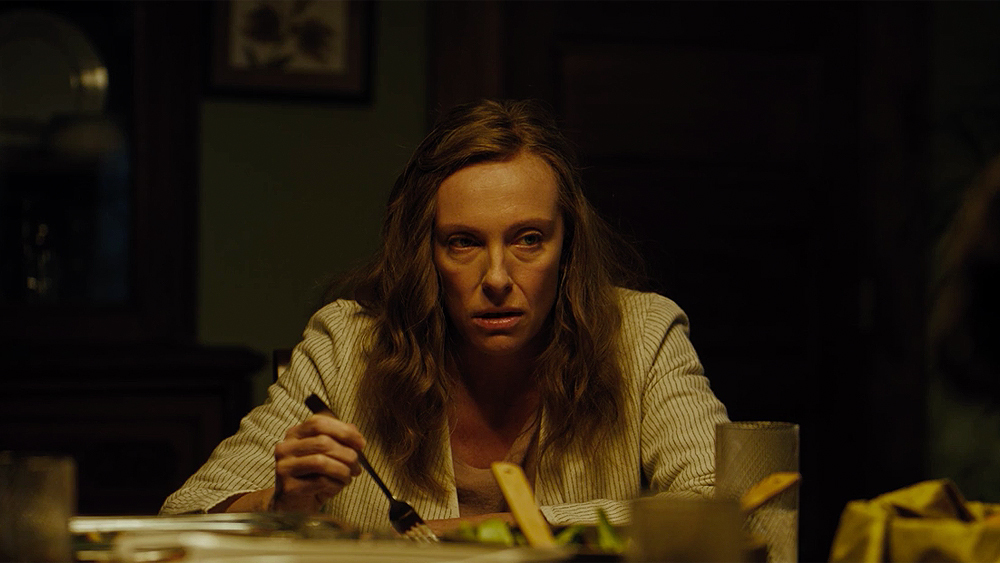
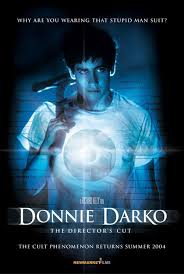
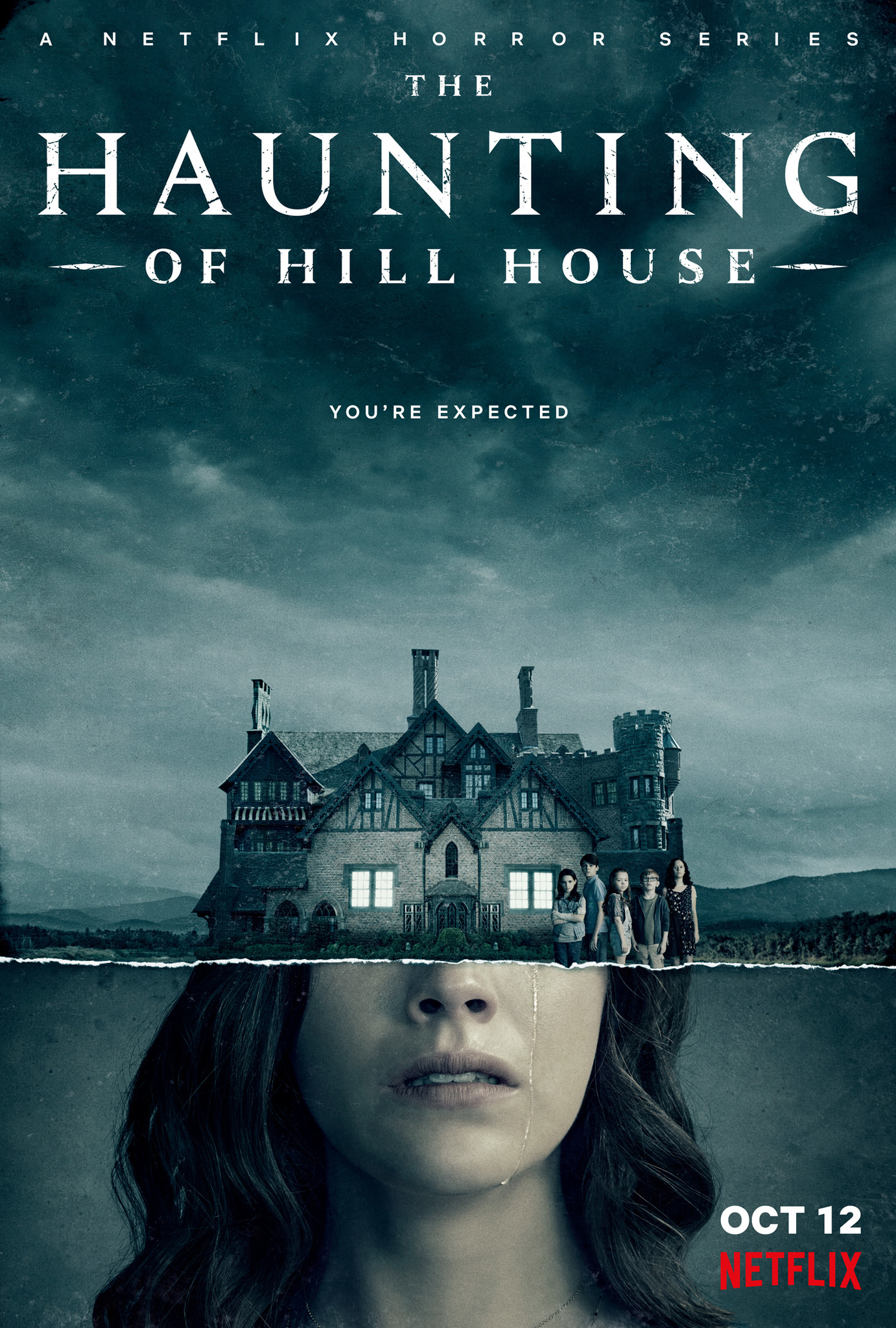
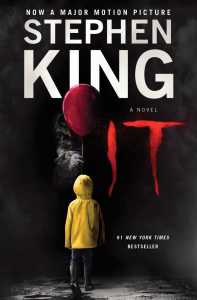
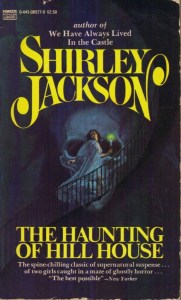
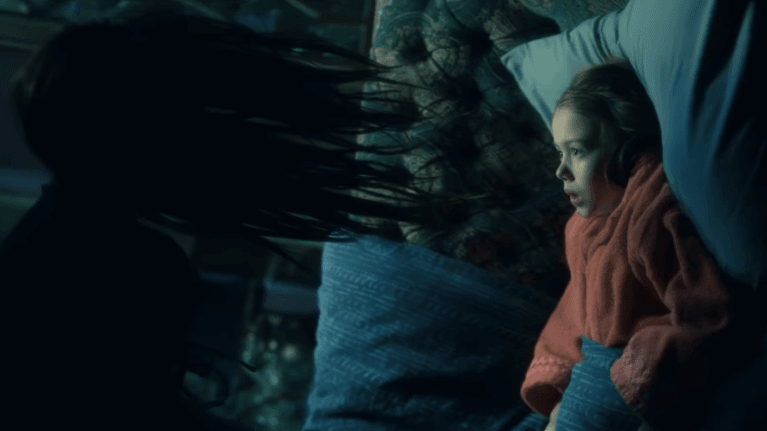
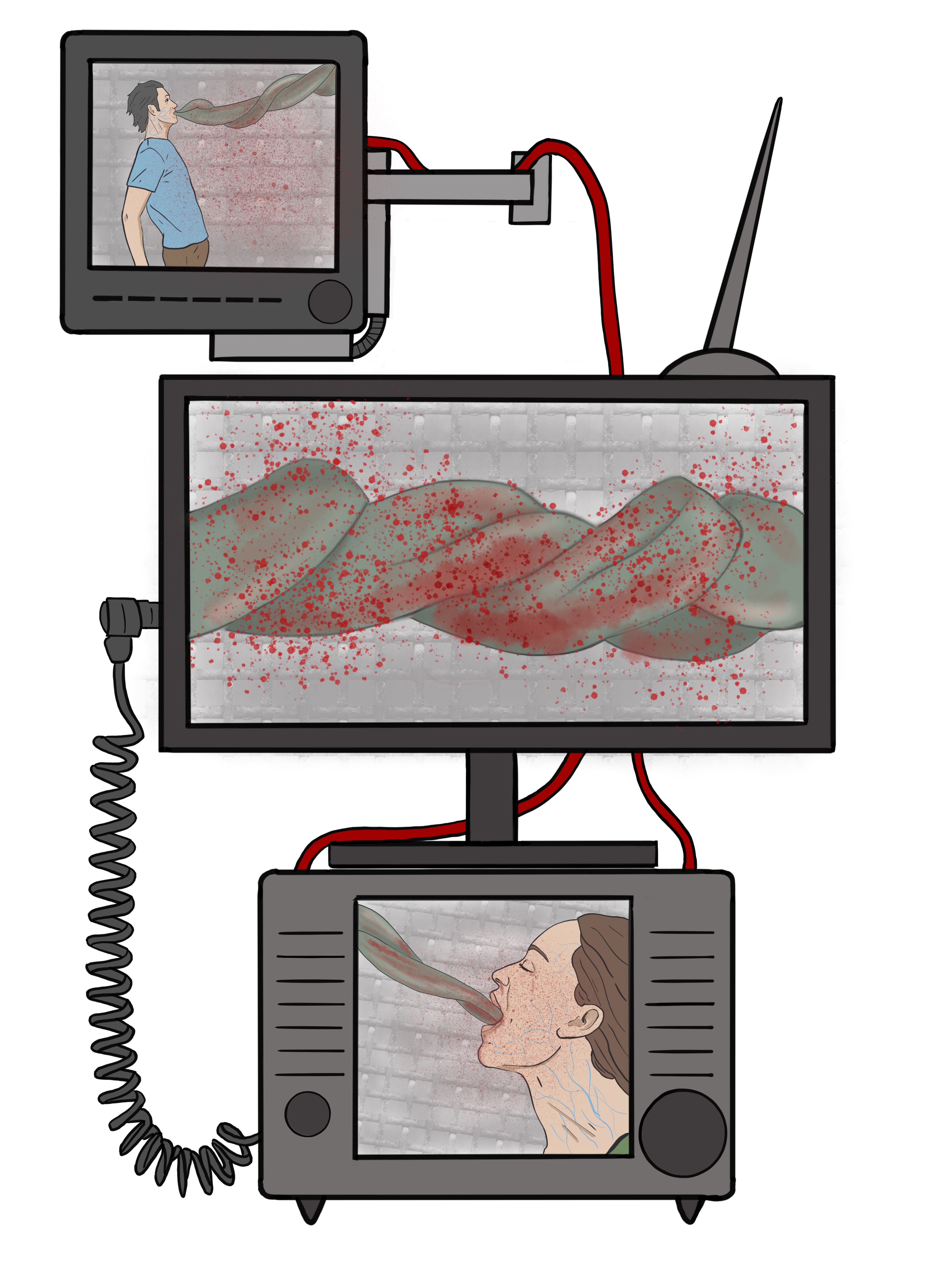











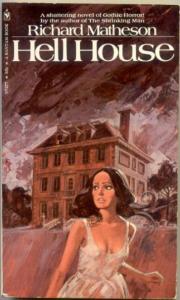
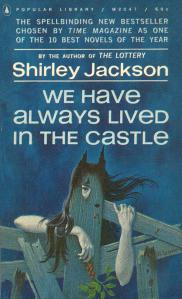
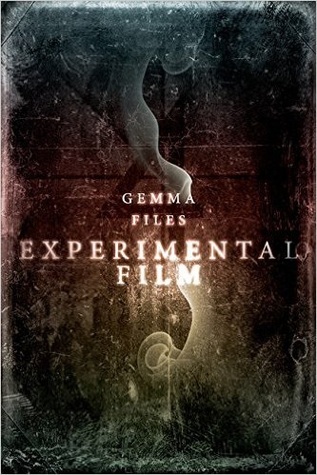
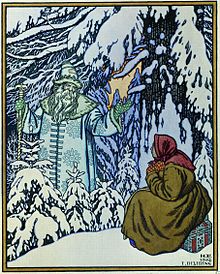
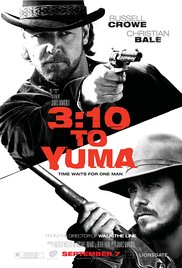
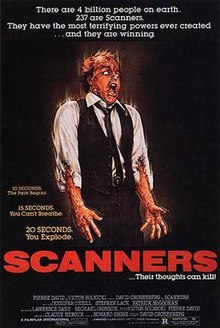
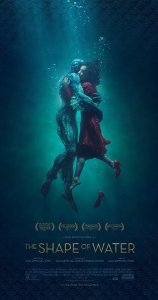
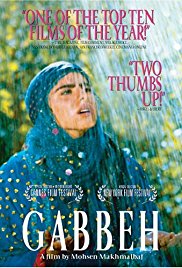
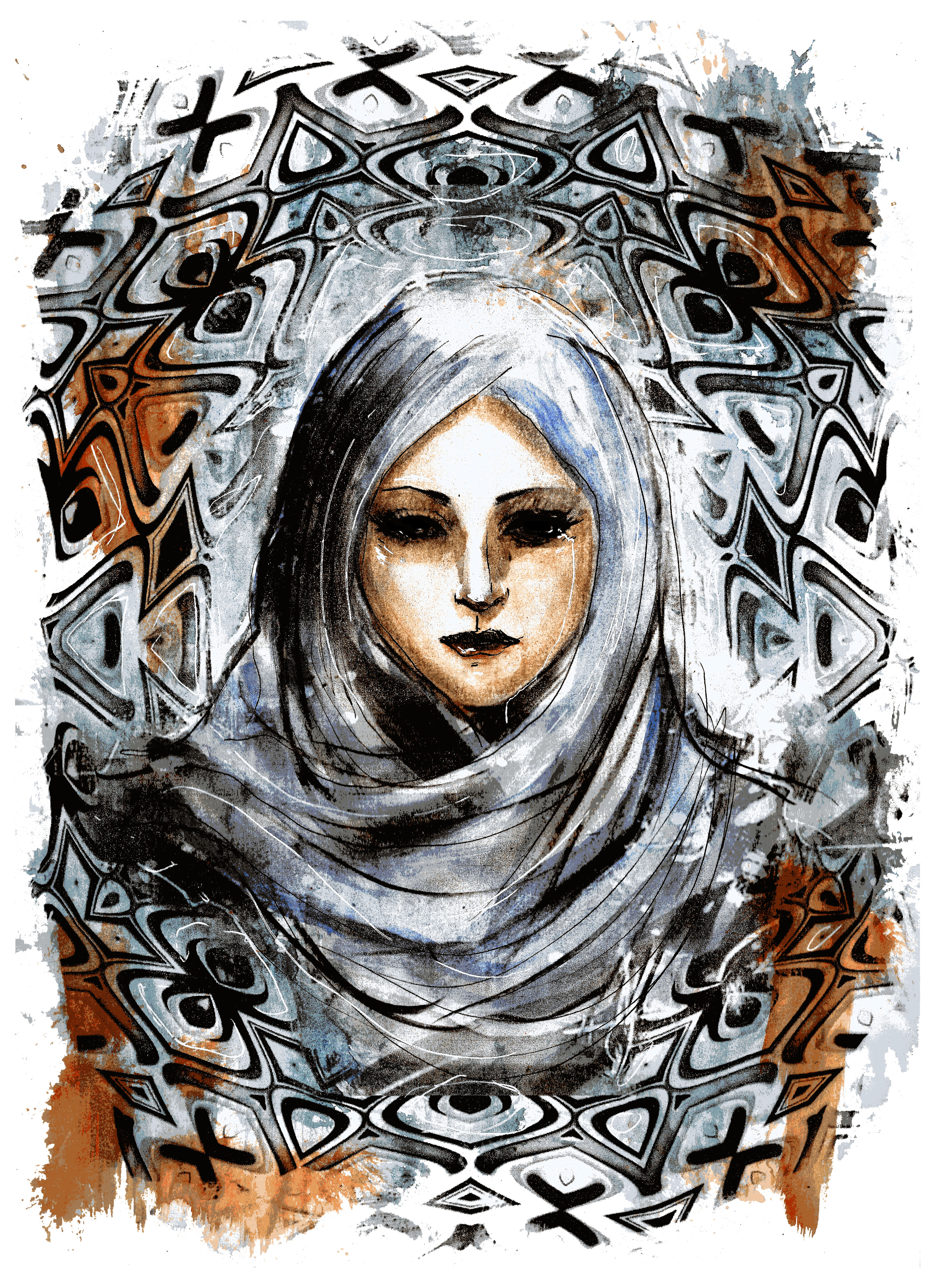
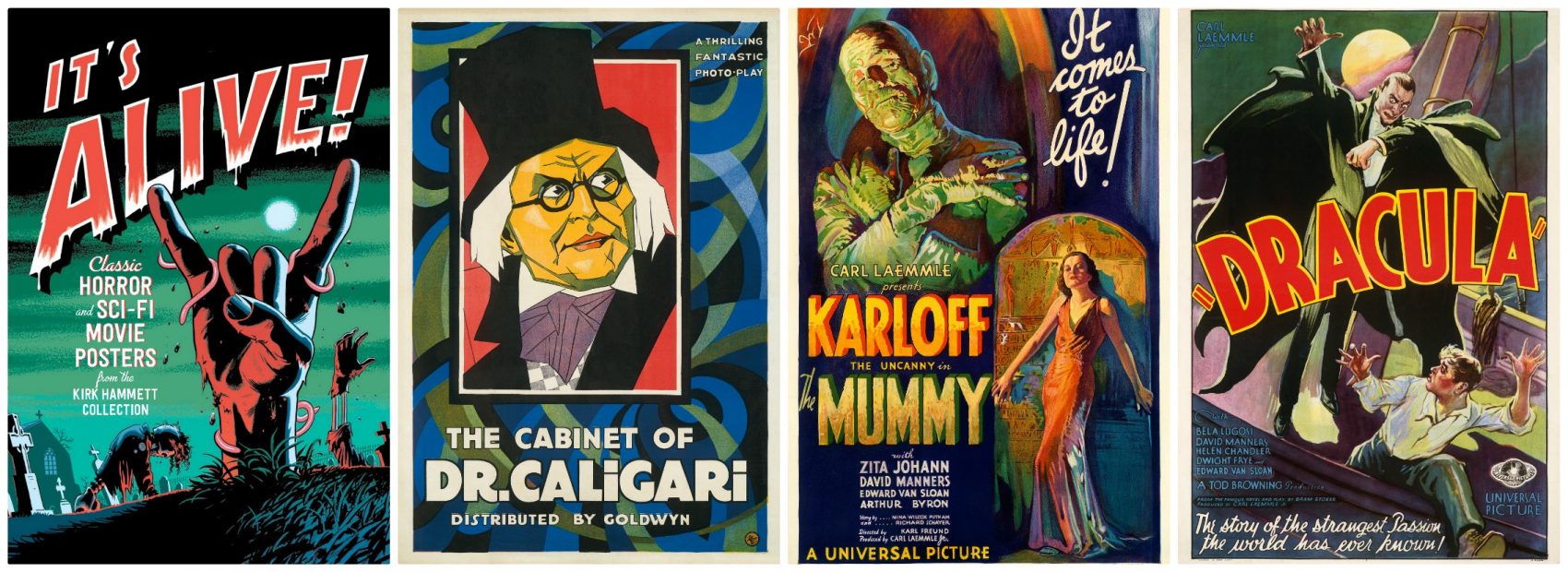
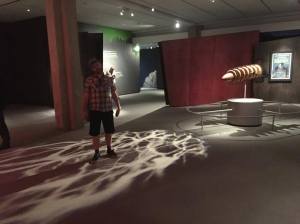
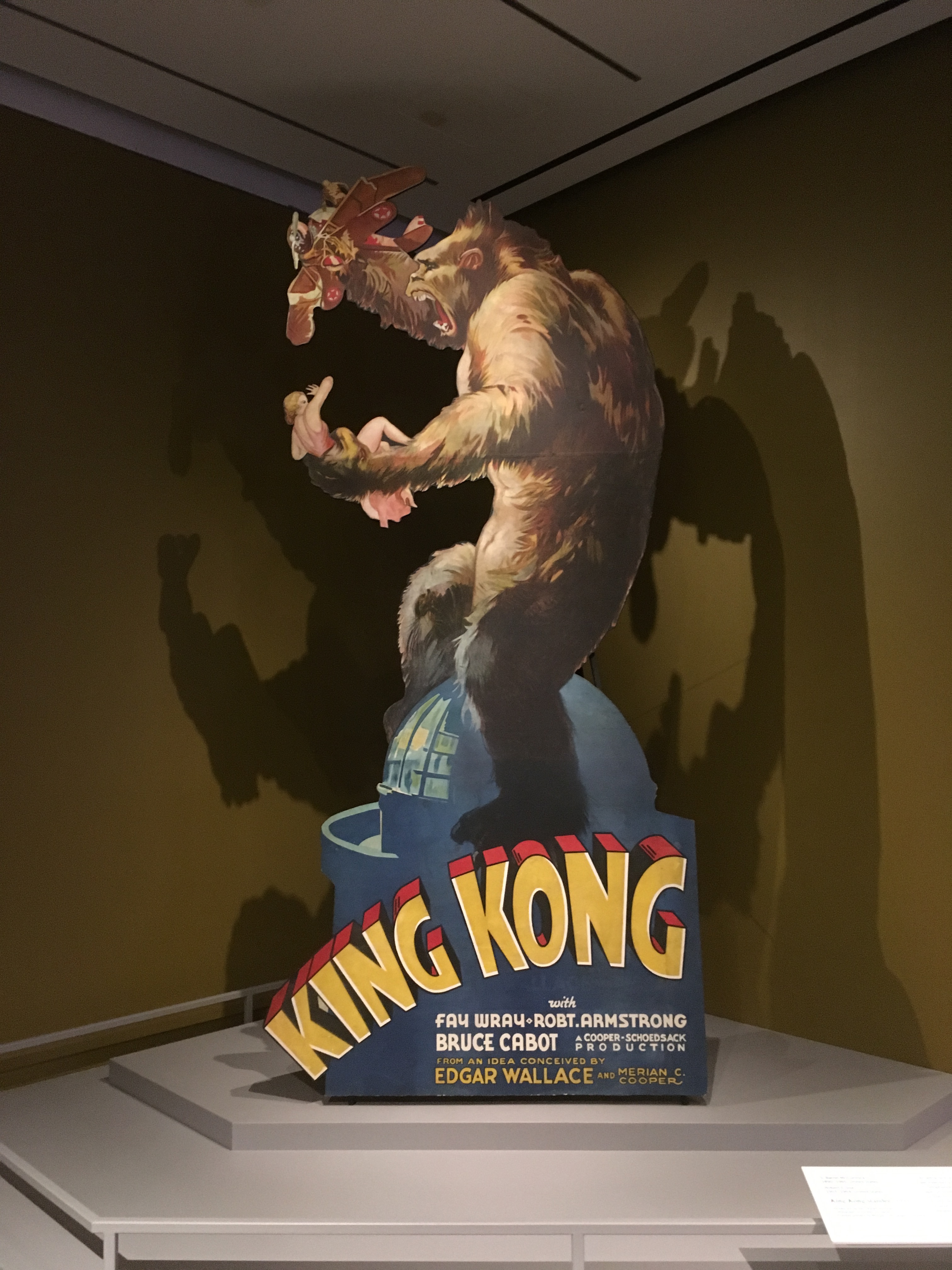

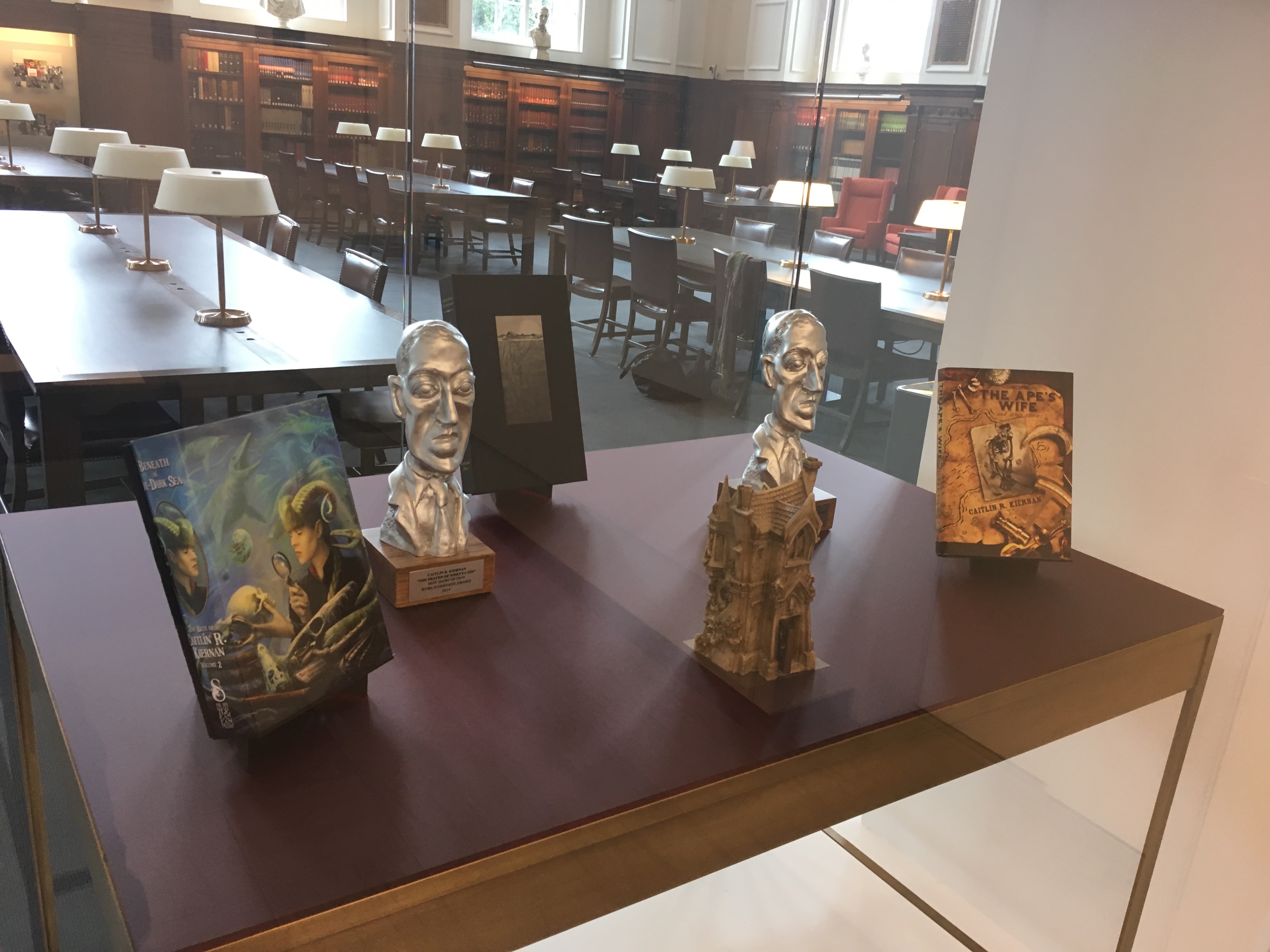
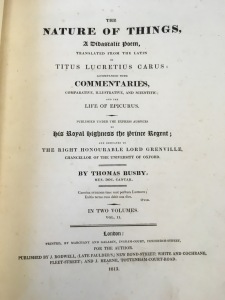
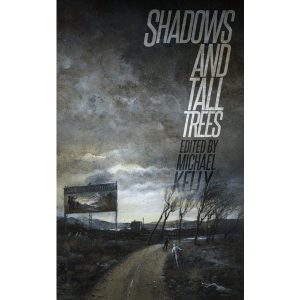 While the entire run of S&TT is excellent, and a must-read for those who enjoy quiet, creeping and artfully insidious horror and weirdness, this volume covers a wider range of voice and tone than its predecessors. Robert Levy, Simon Strantzas and Steve Rasnic Tem read excerpts from their contributions. It was Tem’s story, “The Erased,” that haunted me the most; it is a powerful study of the loss of self and world, a dispersion of identity and memory closely akin to dementia.
While the entire run of S&TT is excellent, and a must-read for those who enjoy quiet, creeping and artfully insidious horror and weirdness, this volume covers a wider range of voice and tone than its predecessors. Robert Levy, Simon Strantzas and Steve Rasnic Tem read excerpts from their contributions. It was Tem’s story, “The Erased,” that haunted me the most; it is a powerful study of the loss of self and world, a dispersion of identity and memory closely akin to dementia.